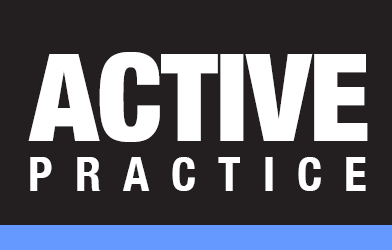Technologies in Your Future - TechNotes
/By Wells H. Anderson, JD
(Originally published in the American Bar Association GPSolo eReport)
What innovations in the area of computing and communications await you? As the end of another year approaches, here is a sampling of ground-breaking inventions and paradigm shifts.
Devices and projects in this collection promise to deliver real, practical benefits. In their infancy they may sound a bit odd and too expensive, but so did other innovations that are now affordable and commonplace. Read on to see how these technologies may affect you in the future.
Beyond Videoconferencing
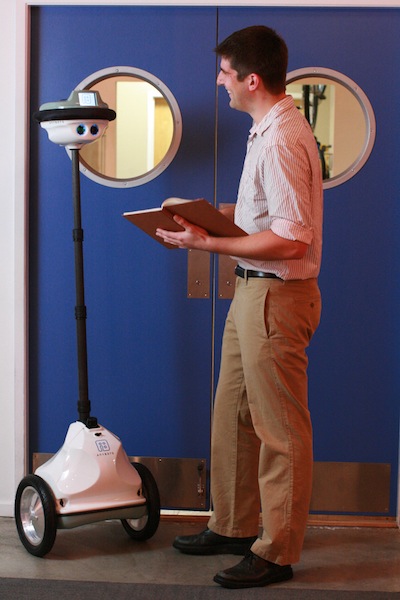
The videoconference walls you see promoted on television are extremely expensive. They require people on both sides of the video meeting to assemble in specially equipped rooms.
Telebots, now commercially available, allow you to attend meetings and conferences virtually. You control a mobile robot equipped with a video camera, speaker, and microphone. The telebot lets you see, hear and converse with people without setting up a formal videoconference in dedicated rooms.
The Anybot QB, $15,000, sports a small video screen at the top of the unit that lets people see a small, live image of you via your webcam. You talk and listen with your headset, seeing on your screen what your telebot sees. http://anybot.com
Flat, Bendable Phones and Tablets
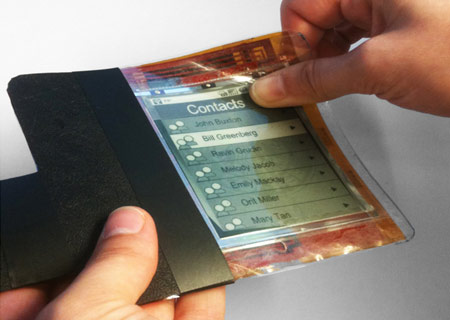
The Human Media Lab at Queen's University in Ontario, Canada has showcased the PaperPhone, a thin-film, bendable phone.
According to Dr. Vertegaal, "This is the future. Everything is going to look and feel like this within five years. This computer looks, feels and operates like a small sheet of interactive paper. You interact with it by bending it into a cell phone, flipping the corner to turn pages, or writing on it with a pen." http://www.hml.queensu.ca/paperphone
Preserving Your Memories and Records in Stone
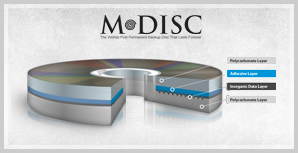
Did you know that your files, photos and movies will become unusable in 3 to 8 years on hard drives, flash drives and rewritable CDs and DVDs? Even longer-lasting DVDs die within 15 years. Very few hard drives are designed to go more than 6 months without being used. They need to spin occasionally to stay lubricated and eventually lose data whether used or not.
Milleniata, http://millenniata.com, markets DVDs that use a stone-like recording material that will retain information for 1,000 years! They work in standard Blu-ray DVD recorders.
Mobile Device Eyewear

Eyeglasses that present a see-through display of your mobile device screen will break the limitations of the small screens on today's phone and tablets.
Imagine giving a presentation with your own, invisible teleprompter. Or catching up on e-mail, news, and IMs anywhere without pulling out or holding a device. The image may be switched from see-through to opaque, giving you a big screen experience for normal computing or watching videos.
Microvision is currently developing stylish and protective eyeglasses with embedded special optical and wireless or wired connections to phones and tablets. http://www.microvision.com/wearable_displays/mobile.html
The Cloud Is Listening, Watching and Assisting
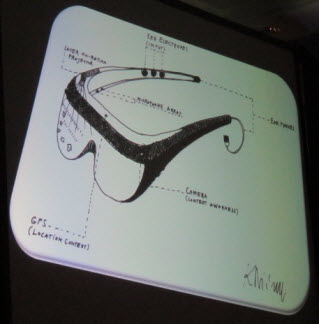
Wearable miniature video cameras with wireless connectivity will make it practical to feed what you see and hear into your private cloud services. Anticipating what you need to know or do, your electronic personal assistant services will send you suggestions, tips and relevant information from a variety of sources, including your own collections of communications, documents and previously recorded feeds.
The services will also be able to monitor public streams and feeds that your friends and colleagues allow you to filter. Talks about information overload and multi-taksing. Current technologies and usage patterns represent the first steps of a journey that is hard to imagine today.
At eComm 2011, independent researcher Szymon Slupik, a Krakow-based futurist, said that today's mobile phones will be succeeded by devices that link our senses to those of other people and machines. It is not so fantastic: You hear what I say. I see what you see. We are separated by distance but connected by sounds and displayed images.
Signs of the Times
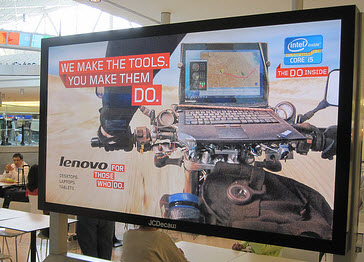
In one of John Sandford's Minnesota-based police detective novels, a visiting Russian law officer is staggered by the sheer number of signs in America. We have signs on buildings, billboards, T-shirts, car bumpers, skateboards, and fashion accessories. Now we are seeing the trend toward animated digital signs. Electronic billboards are just the beginning.
Expect to see digital labels on shelves and items in grocery stores, shops, and businesses. Watch for signs that want to interact with you and signs that you can capture with your mobile phone camera, linking you to even more information.
E-Paper for mobile devices and signs will evolve dramatically over the next 10 to 20 years. Jason Heikenfeld, associate professor of electrical and computer engineering at the University of Cincinnati wrote:"A Critical Review of the Present and Future Prospects for Electronic Paper" with several other authors. They discuss the projected timeline for the introduction of advances in bright, full-color, thin, rollable, reflective, low-power e-paper. http://www.uc.edu/news/NR.aspx?id=13030
Don't Put a Cell Phone to Your Ear

The term, "cell phone," may take on a darker meaning as studies connect cell phone radiation with effects on brain cells. Mark Huffington, a contributing editor at ConsumerAffairs.com suggests being prudent and erring on the side of caution when using a mobile phone. His recommendation follows the World Health Organization's classification of cell phone electromagnetic fields as "possibly carcinogenic to humans."
Before you dismiss studies on links to cancer as being hopelessly inconsistent and contradictory, ask yourself two questions personal to you: (1) How significant would the harm be to your life? (2) How hard would it be for you to reduce or eliminate the risk? In the case of cell phones, it takes just a few seconds to put an earphone in your ear or less time to press Speaker and hold the phone away from your brain.
Even cell phone manufacturers, who criticize WHO, include warnings with all phones advising the use of handsets at a distance from the body. They want to reduce legal risks in the event that the cancer link is more definitively established. It stands to reason that a device that must transmit data 2500 feet to a cell tower must generate a signal many times more powerful than WiFi (100 feet) or Bluetooth (8 feet).
The effects of exposure to a carcinogen typically take 20 to 30 years to produce symptoms. Should we reduce our risk of exposure following the advice of WHO and the cell phone makers' lead?
Shared Tabletop Touch Screen
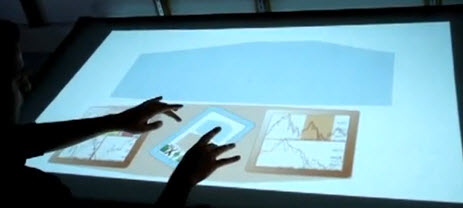
Hugin, a software framework developed at Purdue and the University of Manitoba, Canada, connects the screens of multiple people into a shared tabletop touch screen. This technology allows you to collaborate with others, seeing all of their screens as well as arranging, resizing and interacting with them.
As a Hugin user, you determine which windows and information are shared with others on the tabletop screens. That allows you both to protect private information and to keep from overwhelming the shared workspace with too much information.
A video showcasing Hugin is available on YouTube: http://www.youtube.com/watch?v=Ki92zYgiUNo
Details of the Hugin project are presented in a paper, "Hugin: A Framework for Awareness and Coordination in Mixed-Presence Collaborative Information Visualization." https://engineering.purdue.edu/~elm/projects/hugin/hugin.pdf
Flapping-Wing Plane
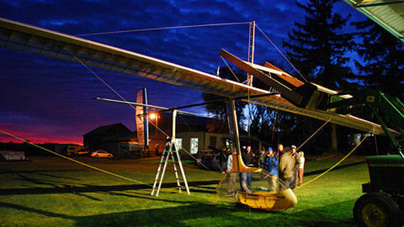
OK, so a flapping-wing, human-powered plane is not practical. But I couldn't resist including it in this collection of ingenious futuristic inventions.
Weighing 94 pounds (43 kg.) with the wingspan of a Boeing 737 (105 ft., 32 m.), Snowbird set a world record by flying 475 feet (145 m.) powered entirely by its pilot, Todd Reichert of the University of Toronto Institute for Aerospace Studies. A video is available on Vimeo: http://vimeo.com/15168011
Wells H. Anderson (info@activepractice.com) works directly with small firms and solos across North America via virtual meetings to implement Time Matters practice management software and Billing Matters timekeeping and billing software. Through his website, www.activepractice.com, he regularly publishes technology tips and articles and hosts a monthly Webinar open to all. Anderson serves on the GPSOLO Editorial Board of the ABA GPSolo Division and is a winner of TechnoLawyer awards, including Legal Technology Consultant of the Year.
